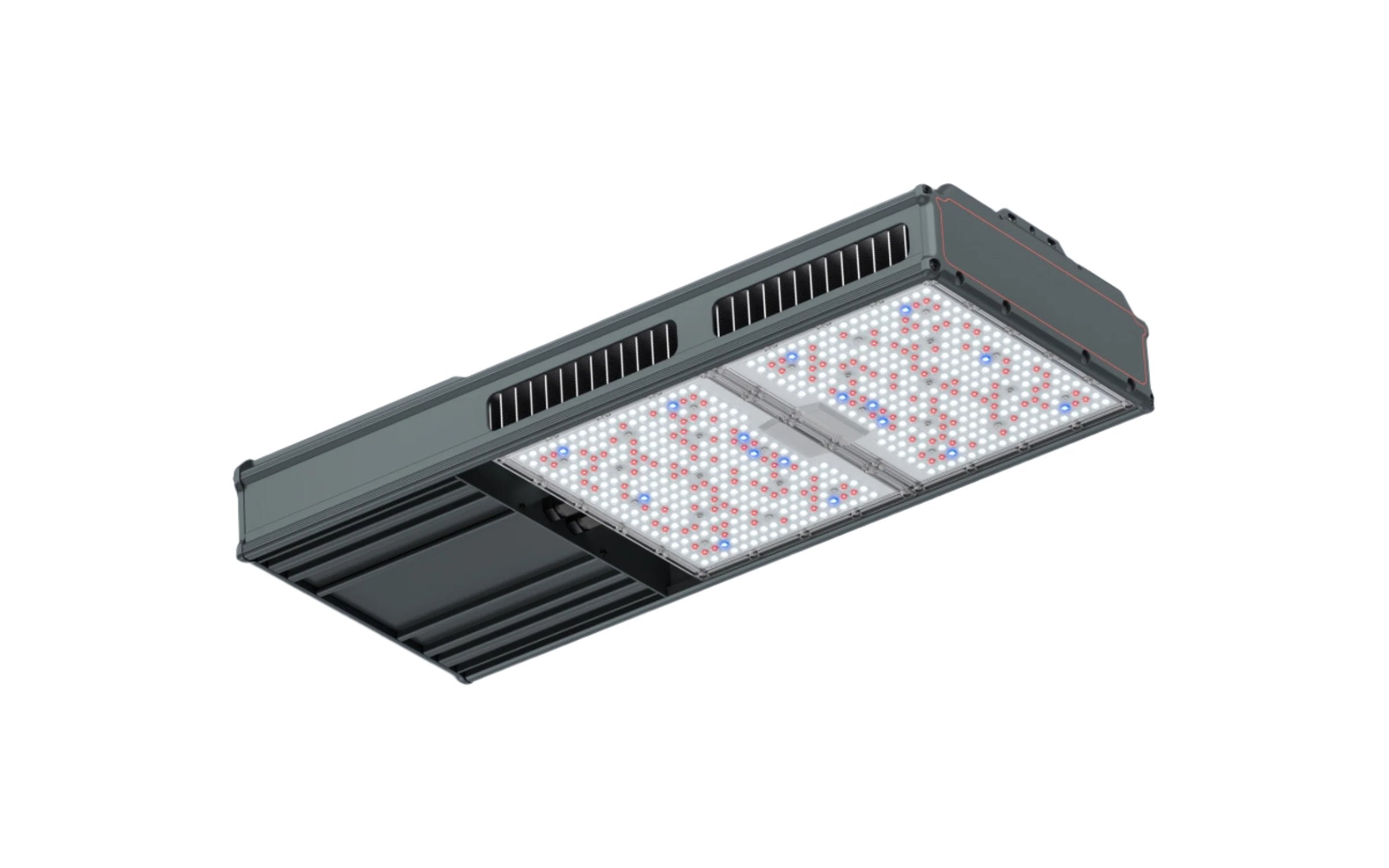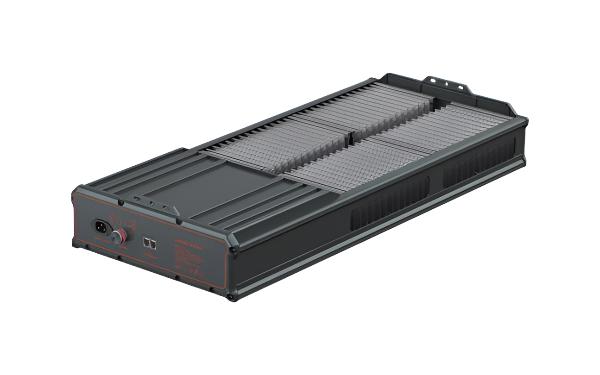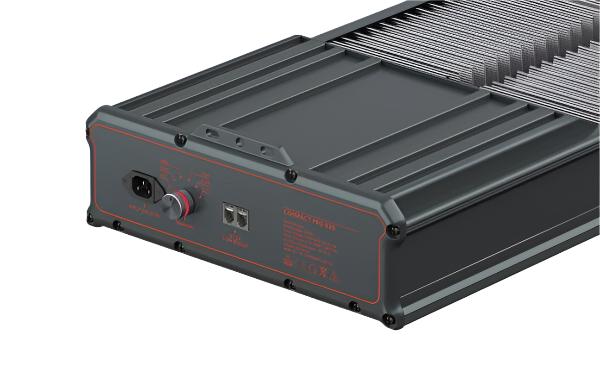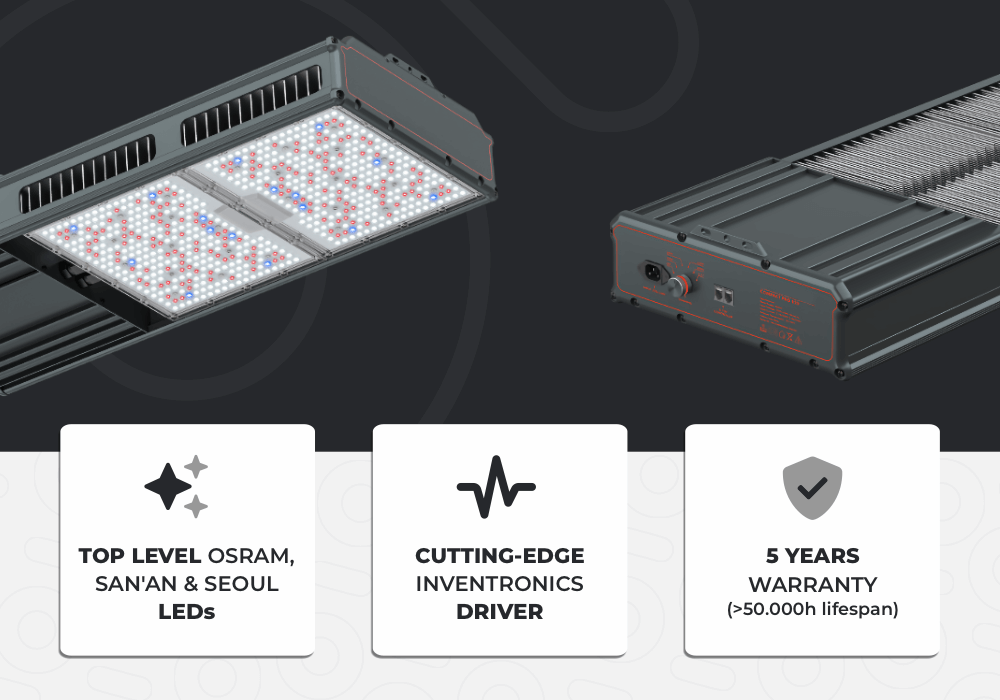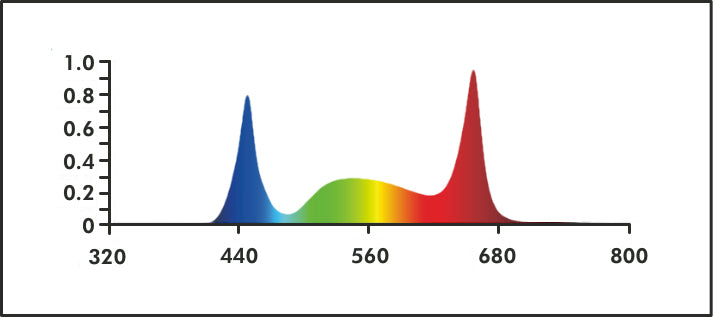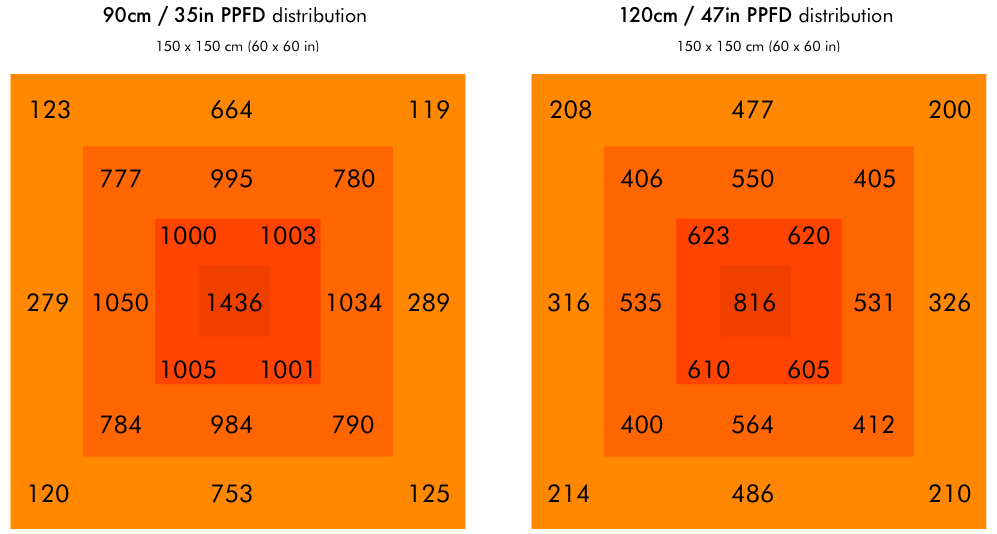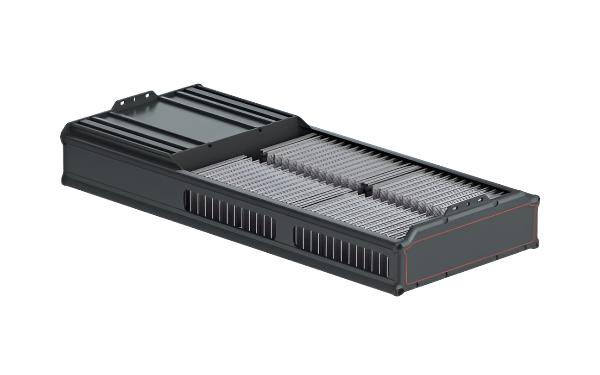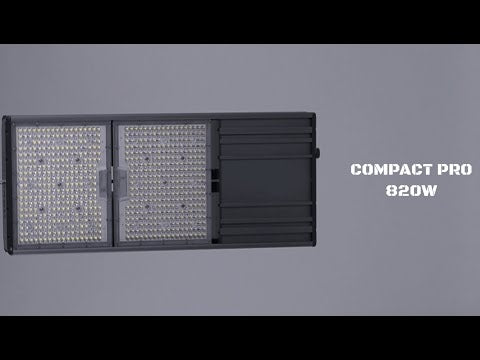Descripción
Nokotech COMPACT Pro 820 model stands out for its super compact size compared to the power it delivers. With a maximum PPF of 2000 μmol/s, 2.5 μmol/j efficacy, and lower heat emission than HPS grow light, it is the top choice for 1:1 HPS replacement.
Remeber the Gavita CT200e? This is the same but better - works straight out of the box - no extra widgets needed / or hidden costs.
Technical specifications
|
MAX POWER
|
820W |
|
INPUT VOLTAGE
|
220-240V |
|
DIMMING
|
0-10V Dimmable or knob |
|
MAX PPF
|
2000 μmol/s |
|
EFFICACY
|
2.5 μmol/j |
|
MAX AMBIENT TEMPERATURE
|
40°C / 104°F |
|
BEAM ANGLE
|
120° |
|
LED CHIPS
|
Seoul (white), San'an (blue) & Osram (red) |
General specifications
|
DIMENSIONS (L.W.H)
|
740 x 340 x 90 mm / 29 x 13.5 x 3.5 in |
|
GROSS WEIGHT
|
16.5 kg / 36 lbs |
|
NET WEIGHT
|
14.5 kg / 31.9 lbs |
|
WARRANTY
|
5 years |
The NOKOTECH Range
- Simplex Maxi-Fit - 240w (500 x 500 x 35mm)
- Simplex Pro - 680w (1120 x 1076 x 35 mm)
- Simplex Pro-Fit - 680w Compact (950 x 950 x 35 mm)
- Compact Pro - 820w (740 x 340 x 90 mm)
CONNECTIVITY & CONTROL
A COMPACT Pro820 can be connected to a daisy chain using RJ ports and an 0-10V controller. It's possible for up to 80 fixtures to be connected to one chain. The majority of 0-10V controllers can handle two chains.
COMPACT SIZE AND POWER
The uniqueness of this model is its small dimensions and the amount it produces. It is the best choice for HPS replacement. COMPACT Pro 820's installation is simple - simply plug and play.
The Compact Pro 820w fixture has a beam angle of 120 degrees and will produce more than 700 PPFDs (parallel to the PAR light intensity) across plants when they are 90cm (35in tall) from the canopy.
Indoor use is only possible with climate-controlled indoor grow areas and indoor farms. These fixtures have a full-spectrum output that can be used for all horticulture stages, including propagation and cloning through to the vegetative and flowering phases.
COMPACT Pro 820w fixtures use high-quality, very efficient Seoul 5050 6500k white (and San'an 500 nm blue (and Osram 660nm red) diodes. This creates a balanced full-spectrum light that is best suited for photosynthesis.

